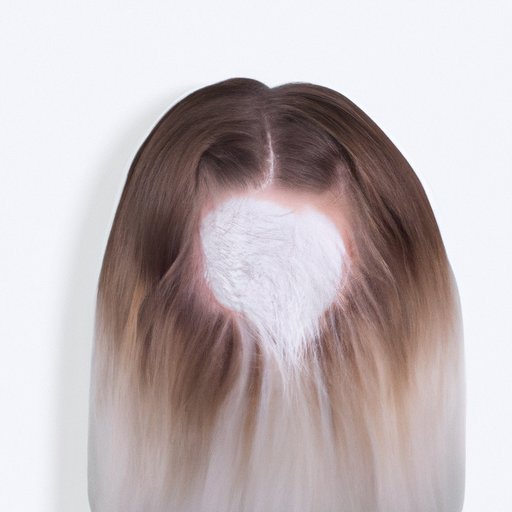
Introduction
Bleaching hair has become a very popular trend in recent years, with more and more people opting for platinum blonde locks. However, as desirable as it may seem, bleaching can lead to significant hair damage if not done properly. Therefore, it is essential to understand the limits and risks of bleaching and how often one can safely do it without causing harm to their hair.
The truth about bleaching your hair: Understanding the limits and risks
Bleaching is the process of removing the natural color of your hair using a chemical mixture. This process dissolves the pigment in your hair shafts, leading to a lightened color. While some hair types can withstand the process without much damage, others can suffer from dryness, brittleness, and even hair loss.
It is crucial to note that bleaching is not a one-size-fits-all solution. Hair types vary greatly, and what works for one person may not work for another. Some factors, such as natural hair color, hair density, and hair thickness, can impact the way hair reacts to bleach. Therefore, it is important to understand the limits and risks of bleaching and to know your hair type before undertaking the process.
How often should you bleach your hair? Experts weigh in
The question of how often to bleach hair is a common one, and experts agree that the answer varies based on hair type. Most experts recommend a gap of at least four to six weeks between bleaches.
If you bleach your hair more frequently than four to six weeks, you risk damaging your hair and potentially losing your natural color. Highly porous hair types are more susceptible to breakage and damage as a result of over-bleaching.
Factors such as the desired end color and the density of your hair can also impact the frequency of bleaching needed. If you’re looking to go platinum and have dark hair, it may take multiple sessions of bleaching to achieve the desired result. It is essential to stay within the recommended guidelines to prevent causing long-term damage to your hair.
Bleaching your hair: How much is too much?
Over-bleaching your hair can lead to significant damage. The chemicals in the bleach can damage the hair shaft’s structure, leading to split ends, breakage, and even hair loss. In addition to this, over-bleaching can cause significant dryness and frizz, leading to excessive breakage.
It is also essential to note that other factors can contribute to over-bleaching hair. Environmental factors such as exposure to sunlight, sea salt, and chlorine can add to damage caused by bleaching. It’s essential to take these factors into account when deciding on the frequency of your bleaching sessions.
Knowing when you’ve gone too far with bleaching your hair can be difficult, but some signs are a surefire indication that your hair is over-bleached. Split ends, excessive dryness, and brittleness are all signs that your hair is in trouble.
From platinum to damaged: The effects of over-bleaching hair
Over-bleaching hair can lead to a host of problems, with the most common being significant hair damage. As mentioned earlier, significant dryness and brittleness are just some of the side effects of over-bleaching.
In severe cases, over-bleaching can cause hair to break off, leading to potential bald spots and patchy hair growth. In addition to this, constant bleaching can make it difficult for the hair to hold color, making it harder to achieve the desired result.
A guide to safely bleaching your hair: Frequency and precautions
Bleaching hair, while potentially damaging, can be done safely if approached the right way. First, it is essential to determine whether or not your hair is healthy enough to withstand the bleaching process. If you have damaged hair or a sensitive scalp, it’s best to avoid bleaching.
The frequency of bleaching should always be within the recommended guidelines of at least four to six weeks. However, if you have particularly thick or coarse hair, you may need to wait longer between bleaches. Additionally, you should avoid bleaching your hair more than twice in a six-month period.
To minimize the risks of bleaching, it is advisable to use hair products designed to protect and strengthen your hair. Pre-bleaching treatments can help maintain your hair’s health during the bleaching process, and post-bleaching treatments can ensure that your hair is left moisturized and nourished.
Conclusion
Bleaching your hair can be an exciting way to change up your look and experiment with different colors. However, it is essential to understand the limits and risks associated with bleaching, and how often you can bleach without causing harm to your hair. By following the recommended guidelines, understanding your hair type, and taking the necessary precautions, you can safely bleach your hair and achieve stunning results.
If you’re considering bleaching your hair, take the time to evaluate your hair’s current state and determine whether or not it is suitable for bleaching. Additionally, it is advisable to speak to a professional stylist to help determine what the best course of action is for your hair.




